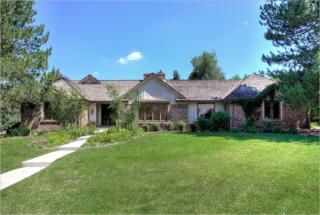The land of the Village has a long and proud history beginning with pioneers and Native Americans who first settled this area. During the 1860s, settlers came from the east and mid-west to find gold.
By the early 1900s, the Village area thrived with orchards of cherry, apple, apricot, plum, and pear trees. Rufus Clark, a Colorado pioneer, bought 160 acres of land along the Platte River. Clark raised potatoes and eventually acquired 20,000 acres of land, including much of Greenwood Village east of Holly Street.
While Rufus Clark was acquiring the massive Clark Colony east of Holly Street, Cyrus G. Richardson, another immigrant, was operating the Greenwood Ranch. An 1899 farm map showed Greenwood Ranch with eight reservoirs stretching from Steele Street and Stanford Avenue on the northwest to Garden Avenue and approximately Dahlia Street on the southeast. The northern half of old Greenwood Ranch included Glenmoor of Cherry Hills Village and the southern half included Horseshoe Park and The Preserve in Greenwood Village. The name “Greenwood Ranch” was the inspiration for the name “Greenwood Village.”
During the 1930s and ‘40s, the area contained a mixture of farmers, suburbanites, and people who lived in Denver, but would come south to “country homes” for the summer. The year 1950 brought many worries to residents that development creeping south from Denver would threaten their pastoral lifestyles. A group of residents took their concerns to their neighbor, Charles “Rollie” Enos, who agreed to chair a meeting at Curtis School. With a group of supporters, Enos proposed a new town and suggested it be called “Greenwood Village” after the historic Greenwood Ranch.
An election was held on September 8, 1950 to incorporate Greenwood Village as a town. Nearly the entire voting population, 138 people, turned out to vote. The incorporation passed by a close margin, 74-64. The small rural community became the Town of Greenwood Village and Charles Enos was elected its first mayor.



